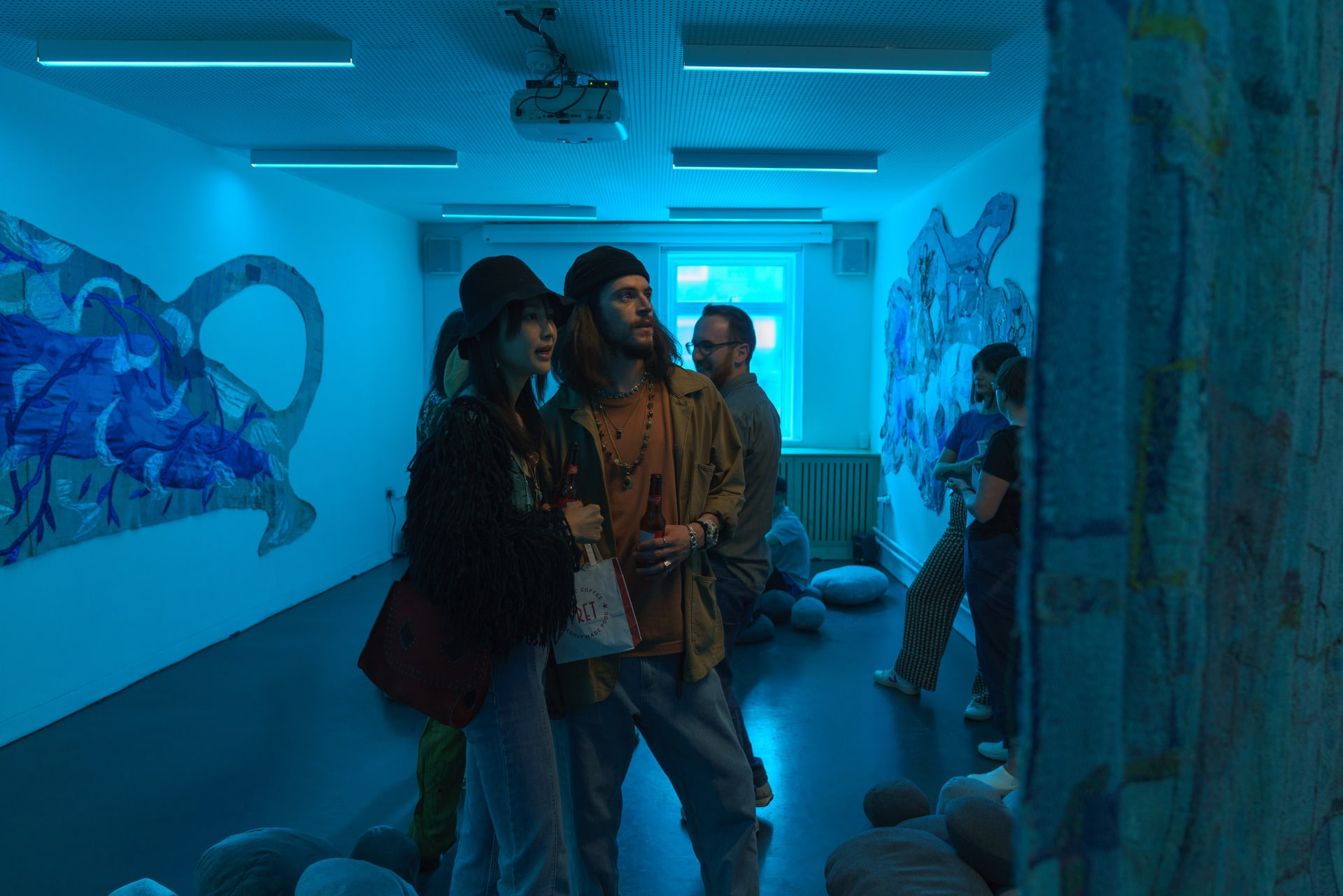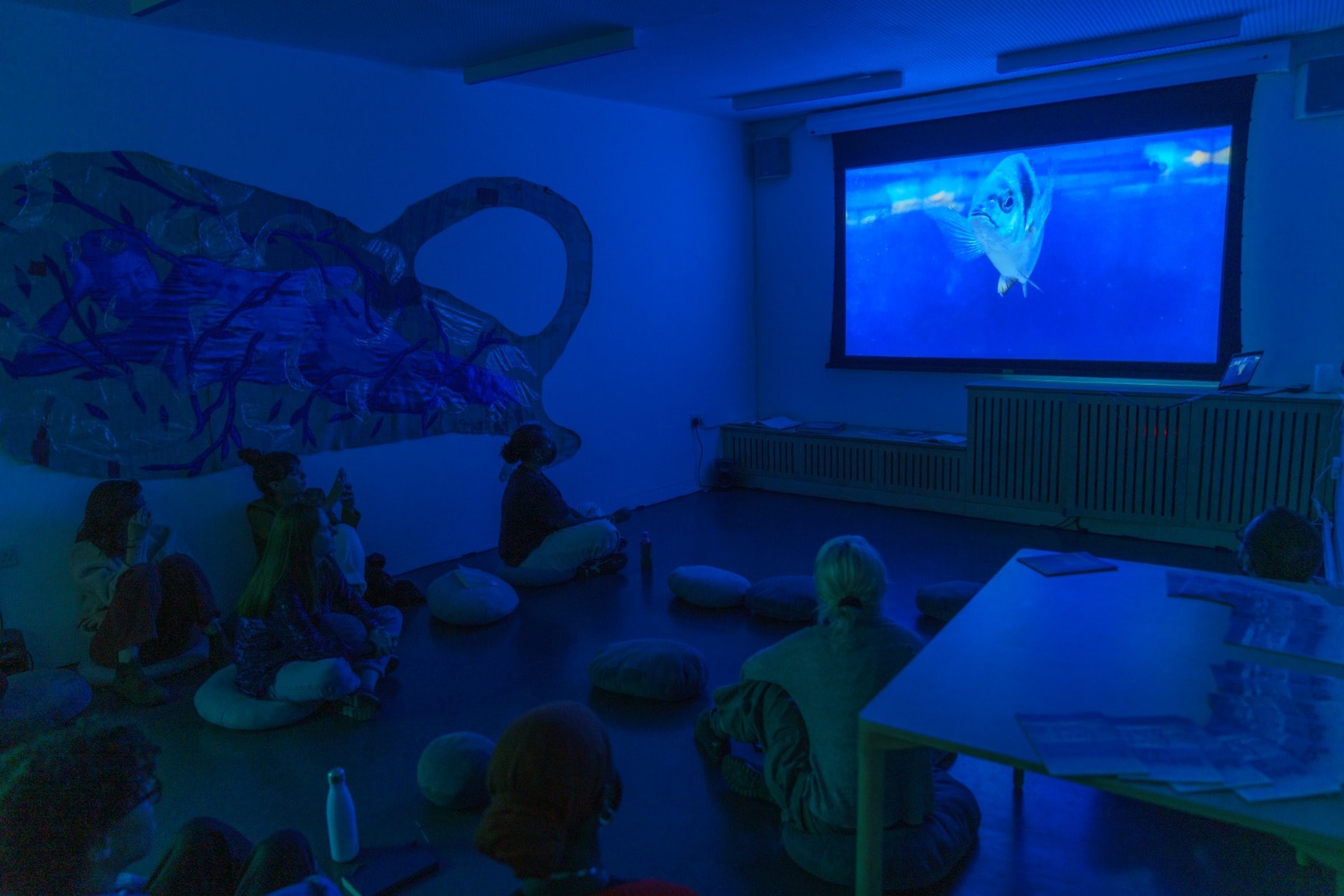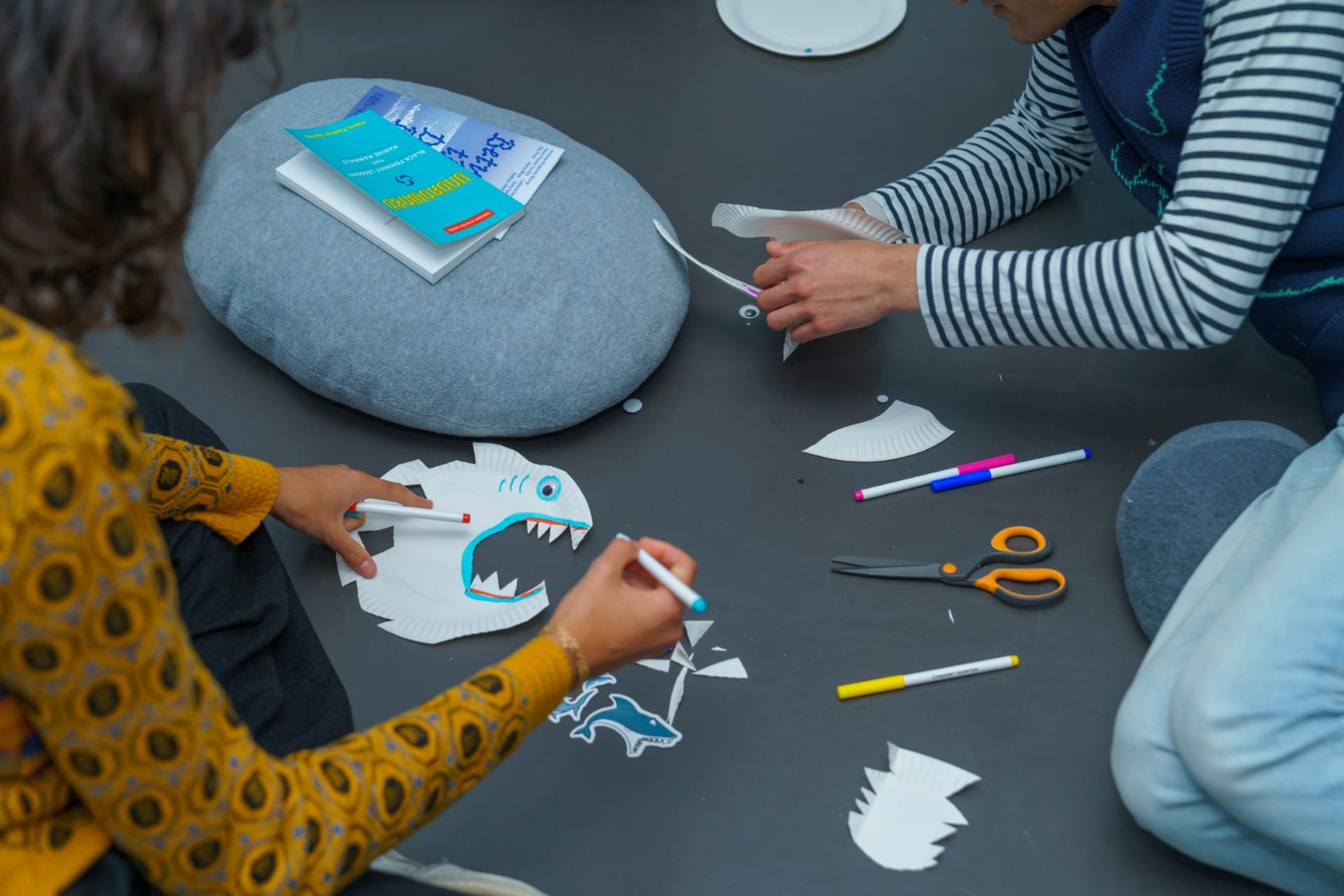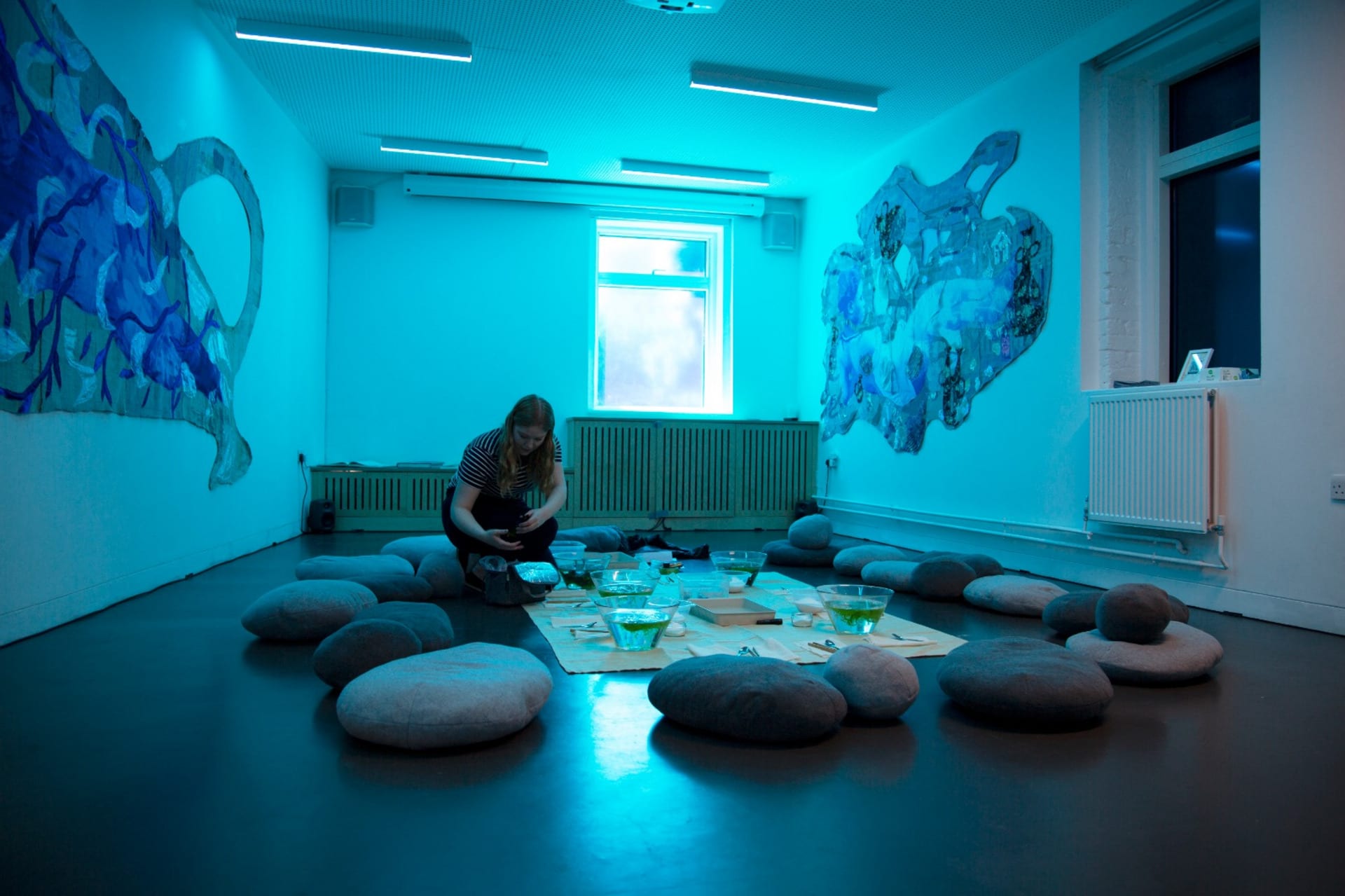Between the Deep Blue was an invitation to question how we can transform past traumatic histories into new ways of living and healing through a series of ocean-linked workshops and events held in an immersive space.
Listen to the water singing the traumas it has been carrying for centuries, to the disappeared stories dragged into the darkness of the ocean. Listen to the forgotten voices and remember their pain.
Remember the ones who used to be in this blue immensity.
Carefully, try to catch the breath of the extinct silent mammal, the sea cow, rebirthing next door through Juha Pekka Matias Laakkonen’s replica of its skeleton. Activating the sea cow as a symbol of the ocean’s witnessing of traumatic experiences, Between the Deep Blue wishes to commune with the wounds of the triangular trade and its present legacies by linking Laakkonen's works to Alexis Pauline Gumbs’ text Undrowned (2020). Honouring the story of the mammal, Gumbs reveals how it was hunted until extinction within 27 years of its discovery as collateral from the colonisation of North America and the hunger for fur and blubber.
What can I do to honour you, now that it is too late? I would honour you with the roughness of my skin, the thickness of my boundaries, the warmth of my own fat. I would honour you with my quiet and my breathing, my listening further and further out and in. I would honour you with the slowness of my movement, contemplative and graceful. (Gumbs, 2020, p. 17).
The space was created in collaboration with North Carolina based artist Ambrose Rhapsody Murray and Slovenian sound artist Robertina Šebjanič.
Murray’s textile presented in the room engaged with Gumb’s text and explored migratory flows of people journeying through the seas and its ecological and historical impacts. Šebjanič’s sound piece entered into dialogue with Ambrose's aquatic works to amplify the feeling of immersion into water. Atlantic Tales (2020) is a musical composition sung in traditional Irish sean-nós style, addressing human and non-human oceanic migratory journeys in the age of the Anthropocene. In this multi-sensorial space, invite your body to rest and experience beyond the gaze, allowing senses to wash over you.
Through a series of workshops and events, the space became an invitation to actively dive into layered stories. An artist talk between Ambrose and Alexis, a meditative evening held by artist Laetisha Davine Lovelace-Hanson, the screening of Ella Frost, Soha Salem and Aisha Mirza’s film What you love too much to lose (2021) and workshop about more-than-human storytelling, and a plant-based photography development workshop offered by Kathryn Attrill, transformed the space by sparking different conversations and providing tools to heal from past traumas and find new ways of living.









